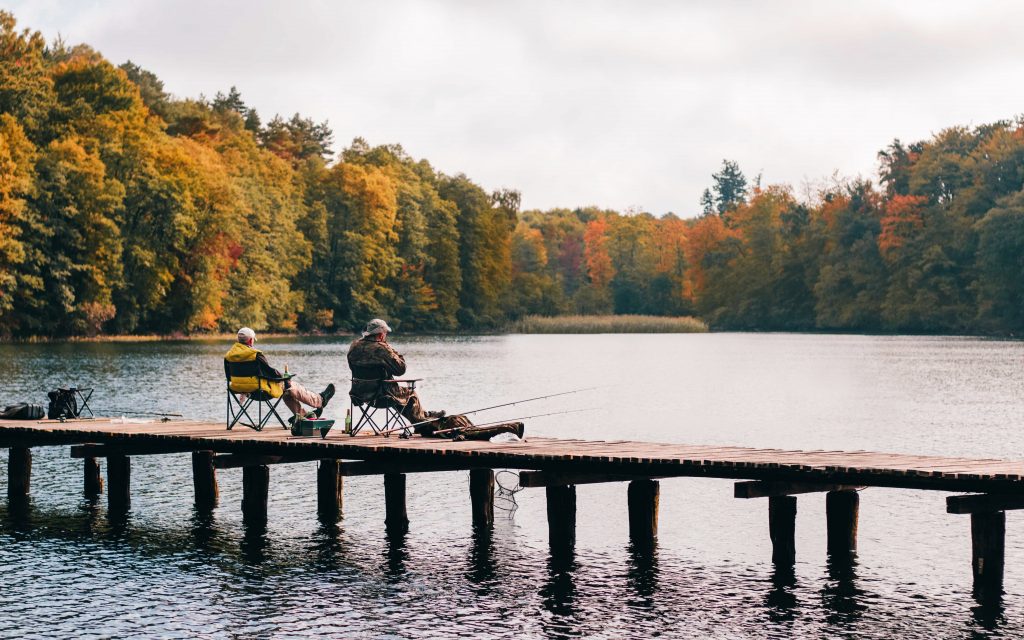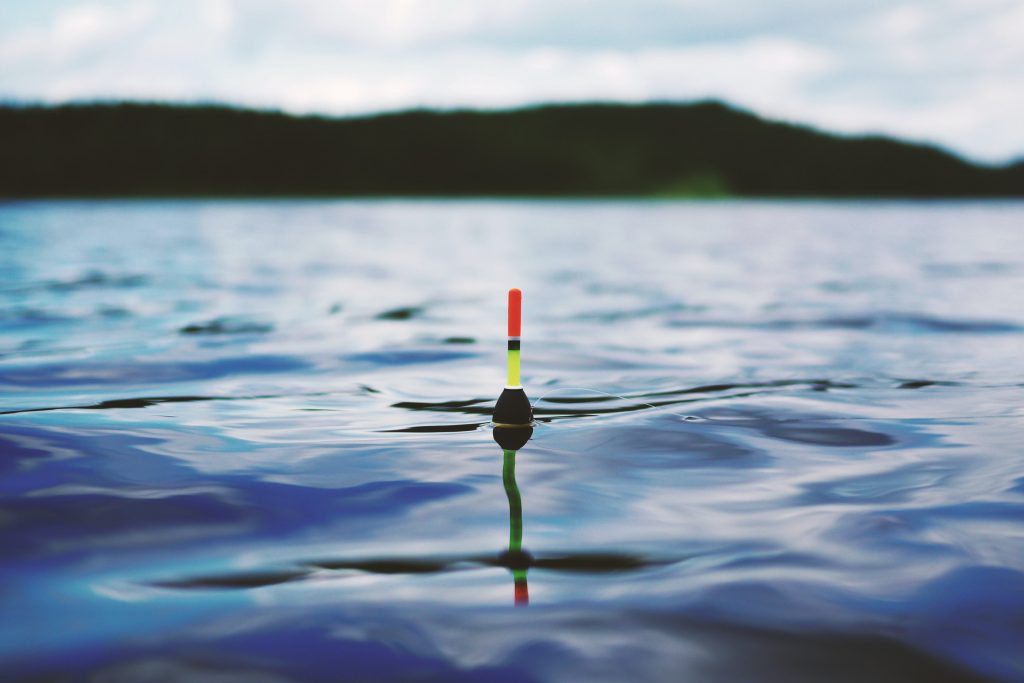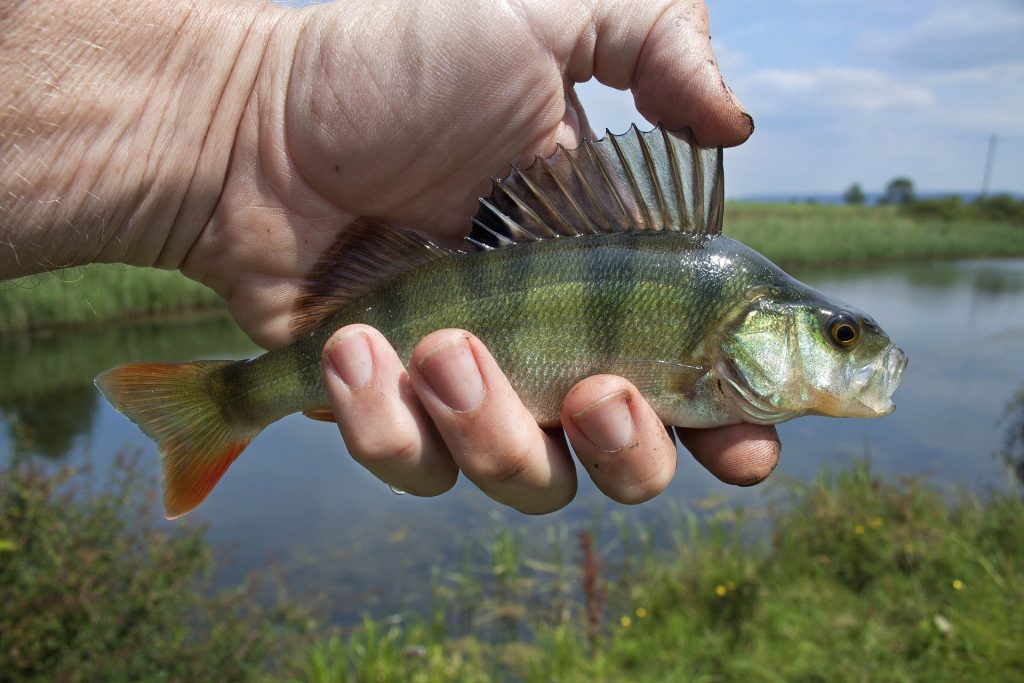Fishing – often referred to as angling and sometimes confused for sitting by a lake for hours watching the world go by. Over 100,000 Brits flock to their local lake, river, canal or pond every year, taking in all the relaxation and stress relief that the great outdoors has to offer. But for a complete newbie, it can be confusing getting to grips with the seemingly never-ending gear and knowledge required to get into the sport.
You may be surprised by how simple and inexpensive angling can be. In this guide, we’ll run you through everything you need to know before you cast off. Like most sports, patience and perseverance are key in the beginning. As they say, good things come to those who bait.

What are the different types of fishing?
- Coarse fishing – This is the most common type of angling and involves fishing in freshwaters such as lakes and rivers and returning fish safely to the water after they’ve been caught. There are around 25 species of coarse fish commonly found in the UK, such as carp, perch, bream and roach.
- Game fishing – This is the second most common method of angling and involves fishing in freshwater for fish such as trout, salmon and char that can be kept and used as food.
- Sea fishing – As you might have guessed, this involves angling in coastal water for fish to keep or put back such as cod, plaice and bass.
In this article, we’ll focus on the most popular and accessible type of angling in the UK, coarse fishing.
Get a license
Before you start fishing in the UK, you’ll need a license. Don’t let this put you off, though. They’re inexpensive and can be purchased easily online. You have the following options:
1-day license: £6
8-day license: £12
Annual license (up to two rods): £30
Annual license (up to three rods): £45
If you plan to fish with the family, then you’ll be pleased to hear that under 13’s don’t need a license, and 13-16-year-olds can register online for free. You can find out more and purchase your license here. A word to the wise, if you are fishing on private land, you’ll also need the landowner’s permission.
Find a venue
Next, you’ll need to find some water. Here’s a great resource that’ll help you find popular fishing spots near you. Just enter your postcode in the search box and you’ll be presented with a map containing details on the best fishing spots near you. Click on one and you should find the address and further information about the fishing spot.

Coarse techniques
Okay, so you’ve got your license, you’ve found somewhere to fish, now you need some gear. Before you go and order all the fishing tackle you can find, it’s important to decide which type of coarse fishing you’ll be doing. We’re going to focus the best introductory method for new anglers, pole and whip fishing, and provide a quick rundown of the others.
Pole and Whip fishing
This is the easiest type of fishing for beginners and requires the least amount of gear, so it’s a great place to start your angling adventures. It involves fishing with a pole or a smaller ‘whip’, which is a simple bit of kit that doesn’t require you to use a reel. You’ll still catch plenty of small fish like roach, rudd and perch.
You place a rig on your pole or whip, which is a readymade set of line, float, weights and hooks. Then, using a weight called a plummet, you determine how the deep the water is and set your float accordingly. Fish tend to bite at different depths in the water, so this requires a bit of trial and error. Then, when you feel a bite, you ‘whip’ up your pole and bring the fish into your landing net. After you’ve admired your catch, unhook the fish by hand or use a disgorger for particularly hungry fish, and set it free.
To get a good understanding of the technique, find a fishing buddy or a local group who will be able to teach you. Alternatively, check out some tutorial videos online.
Other types of coarse fishing
- Lure fishing – this involves a rod and a reel and artificial bait that’s designed to look like a small fish, worm or other live bait that attracts larger fish and causes them to bite. You’ll need to get to grips with using a reel, but it’s a fairly simple step up from pole and whip.
- Float fishing – in this type of fishing, a float made of cork, wood or plastic is attached to your line above a baited hook. It’s used as an indicator and moves around when you’ve got a bite.
- Ledgering – A weighted bait or swimfeeder sinks to the bottom of the water. When you get a bite, your rod tip twitches. You can also use an electric bite alarm with this type of fishing.

Pole and whip fishing kit list
Soon you’ll be casting off and preparing to make your first catch. Exciting! Here’s the basic kit you’ll need.
- Telescopic whip – this is your rod. It’ll generally be around 3-4-metres in length when extended, and small enough to fit in your boot when it’s not.
- Bait boxes – help to keep your bait fresh and stored securely away from the rest of your tackle, reducing odours and cutting down on waste from plastic/tin packaging.
- Pole fishing rigs – so handy and cheap to buy. They’re a readymade set of line, float, weights and hooks.
- Plummet –Simply attach this simple weight to your line, let it sink to the bottom, and use that as a basis for sliding your baited hook up or down. Fish will bite at different points in the water and this helps you adjust your line more effectively. It’s really easy and super-effective!
- Disgorger – Most of the time you can remove a hook from a fish’s mouth easily by hand. However, sometimes they can lock down on the hook making it difficult to remove. A disgorger is a simple yet effective tool that helps you unhook the fish quickly and safely.
- Landing net – This is used for safely pulling fish out of the water. Simply pull your catch towards the net and lift it out before unhooking and setting free.
Try before you buy
If that sounds like a lot of gear before you’ve even started, don’t worry. Find a local Get Fishing event where you can borrow the kit and learn the basics before investing in your own. It’s also a great way to meet other beginners in your area.
We have now have introduced dedicated Fishing Republic departments into our Go Outdoors stores! Take a look at our blog below to find out more.
At GO Outdoors we stock an ever-growing collection of fishing equipment from some of the industry’s top brands like Ron Thompson, Prologic and NGT.
